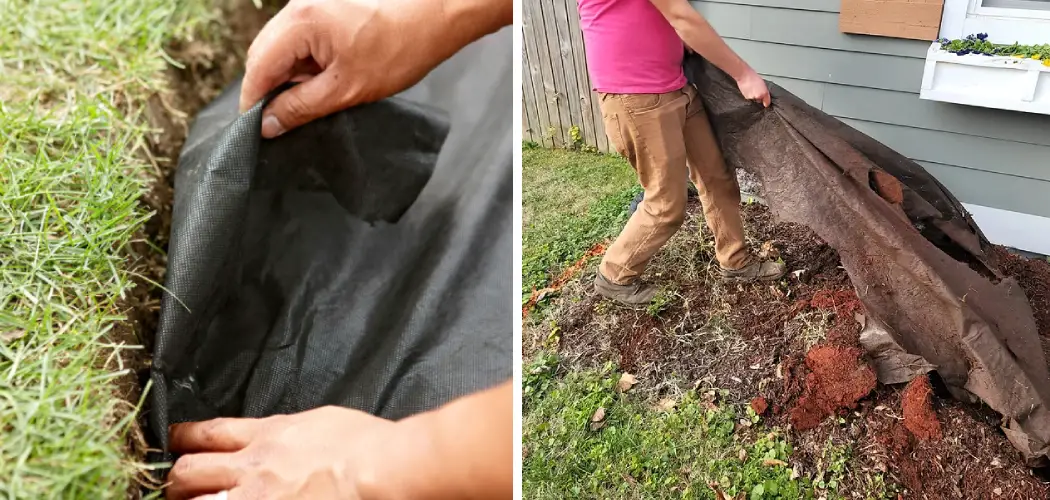Landscape fabric, also known as weed barrier or weed cloth, is a commonly used material in gardening and landscaping projects. While it can be effective in preventing weed growth and conserving moisture, there are times when its removal becomes necessary.
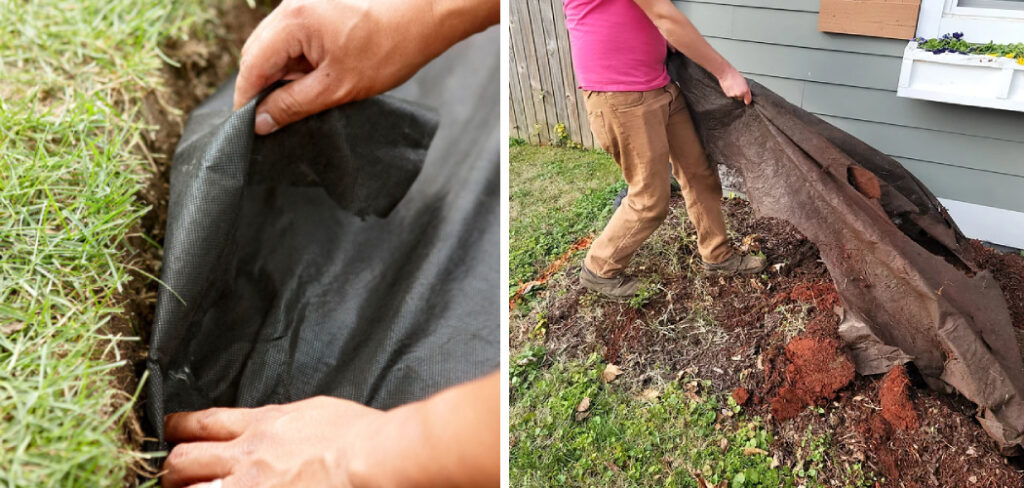
Whether it’s due to wear and tear, a change in landscape design, or simply the need to refresh the soil, knowing how to properly remove landscape fabric is essential.
However, it’s not as straightforward as pulling it out from the ground. Improper removal can leave behind fragments, potentially hindering future planting and causing more frustration than benefit.
In this article, we will guide you through the step-by-step process of how to remove landscape fabric, ensuring a clean and seamless transition for your garden or landscaping endeavors. With the right approach, you can bid farewell to the old fabric and prepare your outdoor space for a fresh and thriving start.
The Role of Landscape Fabric in Garden Maintenance
Landscape fabric is a popular choice among gardeners for its ease of use and versatility. It helps to reduce weed growth, prevent soil erosion, and retain moisture in the soil. This makes it an ideal material for helping keep gardens in good condition over time.
However, landscape fabric requires some maintenance from time to time to ensure that it continues to perform its job properly. The most common way of maintaining landscape fabric is by removing it completely from the area and replacing it with new fabric.
Removing landscape fabric can be done fairly easily with simple tools such as a shovel or trowel. Start by digging around the edges of the landscaping fabric, lifting up sections as you go until all of the fabric is removed. Once the fabric has been completely lifted, use a shovel to scrape off any remaining pieces of material and soil that were stuck to it.
Once the landscape fabric has been fully removed, you can dispose of it properly or reuse it in another area if necessary. It is important to note that once the landscape fabric has been used for one season, it cannot be reused due to its deterioration over time. Therefore, when replacing your landscape fabric, always ensure you are using new material for best results.
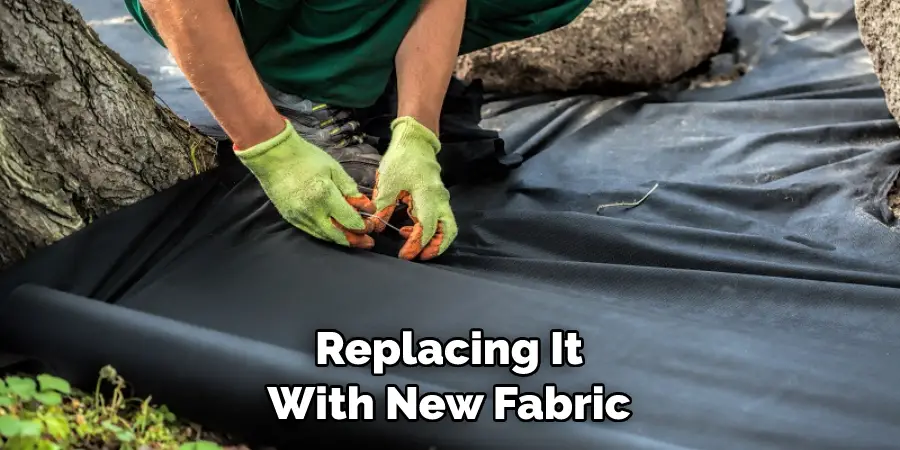
Overall, landscape fabric plays an important role in keeping gardens healthy and well-maintained – but only with proper maintenance and care! With some effort and regular upkeep, you can keep your garden looking its best over the long-term.
Reasons for Removing Landscape Fabric
Landscape fabric is often used to control weeds, but it can also cause problems. Over time it may degrade, leading to gaps where weeds can take root and will be harder to remove. Heavy rains or flooding can shift the fabric and allow weeds to grow underneath.
Additionally, the fabric blocks water and air from penetrating to the soil below, which can lead to poor drainage and plant death. For these reasons, it’s important to know how to remove landscape fabric if it becomes a problem in your yard or garden. Here are some tips for removing landscape fabric properly:
- Dig around the edges of the fabric with a shovel, being careful not to cut through any plants beneath it. Make sure that you get enough of the fabric up to allow you to pull it out in one piece.
- Use a rake or hoe to loosen the soil beneath the fabric and make it easier to remove. This will also help you avoid disturbing any plants that may be growing underneath.
- Pull up large sections of the fabric with your hands, being careful not to tear it. If necessary, use a pair of pliers or a garden claw for more leverage.
- Dispose of the fabric properly by either burying it in an area where weeds can’t take root or taking it to a recycling center for disposal.
By following these steps carefully, you can effectively remove landscape fabric and keep your garden looking great!
10 Methods How to Remove Landscape Fabric
Method 1: Evaluate the Landscape Fabric’s Condition
Before initiating the removal process, take a moment to assess the landscape fabric’s condition. Depending on how long it has been in place, the fabric may have degraded, making it easier to lift and remove. On the other hand, if the fabric is still in good condition, you may need to implement more meticulous removal techniques.
Method 2: Clear the Area and Assemble the Proper Tools
Start the removal process by clearing the area surrounding the landscape fabric. Remove any debris, rocks, or plants that could hinder your progress. Proper preparation ensures a smoother and more efficient removal experience.
Next, gather the necessary tools, including a pair of heavy-duty gloves, a utility knife or garden shears, a shovel or spade, and a rake. Wearing gloves protects your hands during the process, while the utility knife and garden shears help with cutting the fabric.
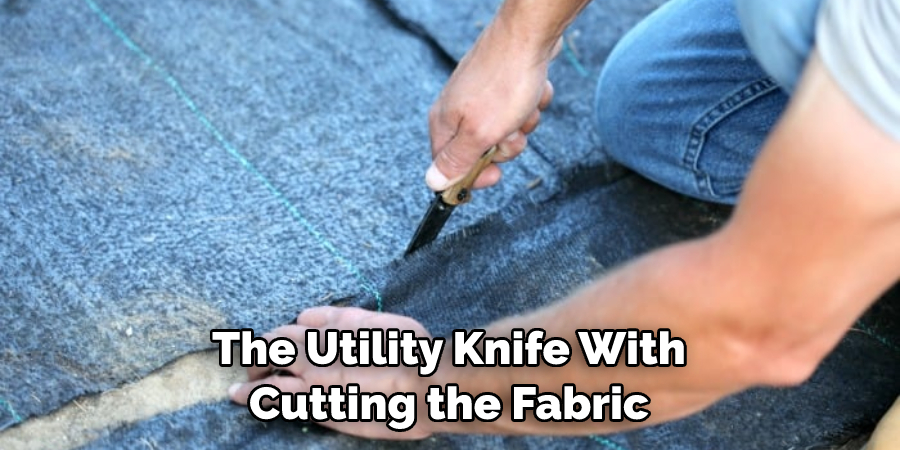
Method 3: Cut and Remove the Edges
Using the utility knife or garden shears, carefully cut the landscape fabric along the edges where it is secured to the ground or hardscape. This initial step makes it easier to lift and remove the fabric in subsequent stages. Be cautious not to damage any adjacent plants or structures during this process.
Method 4: Lift and Roll the Landscape Fabric
After cutting the edges, start at one end of the landscape fabric and lift it from the ground or hardscape. As you lift, gently roll the fabric to keep it tightly wound and avoid spreading debris. If the fabric is secured with staples or nails, cut these fasteners as you roll to ensure smooth removal.
Method 5: Inspect for Residual Fragments
Once the landscape fabric is entirely removed, inspect the area meticulously for any residual fragments or small pieces that might have been left behind. Use the rake to gently comb through the soil, ensuring that no bits of fabric remain. This step is crucial for preventing future weed growth and maintaining the garden’s overall health.
Method 6: Hand Pulling and Cutting
In areas where the landscape fabric may be tightly interwoven with plant roots or hardscape, hand pulling or cutting may be necessary. Carefully lift the fabric and use the utility knife or garden shears to gently cut any entangled portions. Take your time to avoid damaging nearby plants or structures.
Method 7: Wetting the Fabric for Easier Removal
In some cases, landscape fabric can become tightly adhered to the soil due to moisture or age. To loosen the fabric and make it easier to remove, water the area thoroughly. Allow the moisture to penetrate the soil and the fabric, softening it in the process. After a short period, the fabric should be more manageable to lift and remove.
Method 8: Use a Heat Gun or Blowtorch for Stubborn Fabric
For stubborn landscape fabric that is hard to remove, especially on hardscapes or walkways, using a heat gun or blowtorch can help soften the material. Be cautious when using this method, and keep the heat source moving to avoid damaging adjacent structures or igniting nearby plants.

Method 9: Apply Vinegar or Boiling Water for Effective Removal
Vinegar is a natural herbicide that can weaken the fibers of landscape fabric, making it easier to remove. Pour vinegar over the fabric, focusing on areas where it is particularly stubborn. Alternatively, pouring boiling water over the fabric can also help soften it, making it easier to lift and remove.
Method 10: Utilize a Power Washer for Stubborn Residue
For landscape fabric that is heavily covered with soil or debris, a power washer can be effective in dislodging the material. Set the power washer to a low-pressure setting and carefully spray the fabric, gradually working it loose. Avoid using high pressure, as it could damage surrounding plants or hardscape.
Things to Consider When Removing Landscape Fabric
When it comes to removing landscape fabric, there are a few considerations to keep in mind.
1. Removal Method:
The best way to remove the fabric depends on the type of material that is used and how long it has been installed. For example, if you have a woven polypropylene material that has been down for several years, then you may need to use more aggressive methods than if you had a newer non-woven fabric that was only recently installed.
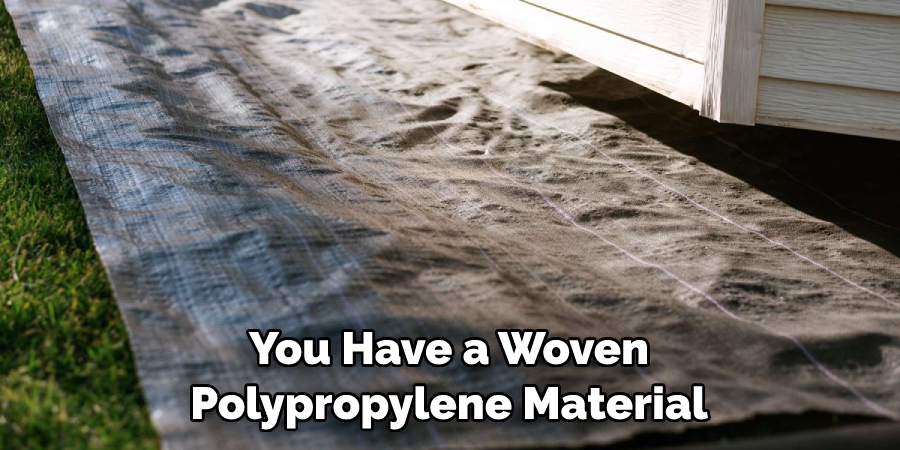
2. Disposal:
After the removal process is complete, make sure to dispose of the landscape fabric properly according to local regulations. Many areas have specific requirements for disposal so be sure to check those before throwing away your old fabric.
3. Weed Control:
Removing the landscape fabric can also have an effect on weed control. Make sure to use appropriate measures to keep weeds from coming back in the area. This may include applying a pre-emergent herbicide or using mulch and other ground cover materials.
Some Common Mistakes When Removing Landscape Fabric
One of the most common mistakes people make when removing landscape fabric is that they don’t prepare the area properly. Because landscape fabric is designed to be an effective barrier against weeds, it is important to make sure that all of the weeds in the area are completely removed before attempting to pull up the fabric.
If not, any weeds that remain will simply grow back through the new layer of landscape fabric you put down.
Another mistake people make when removing landscape fabric is that they don’t use the right tools for the job. Pulling up old landscape fabric can be difficult and time-consuming, and using inadequate tools will only make it worse. It’s best to invest in some good-quality garden shears or a sod cutter so that you can quickly and easily remove the fabric without causing unnecessary damage.
Finally, people often forget to take the necessary steps to properly dispose of used landscape fabric. Because it’s so durable, throwing away landscape fabric in a landfill is not an option. Instead, you should make sure to properly recycle or repurpose your old fabric by donating it or taking it to a local recycling facility.
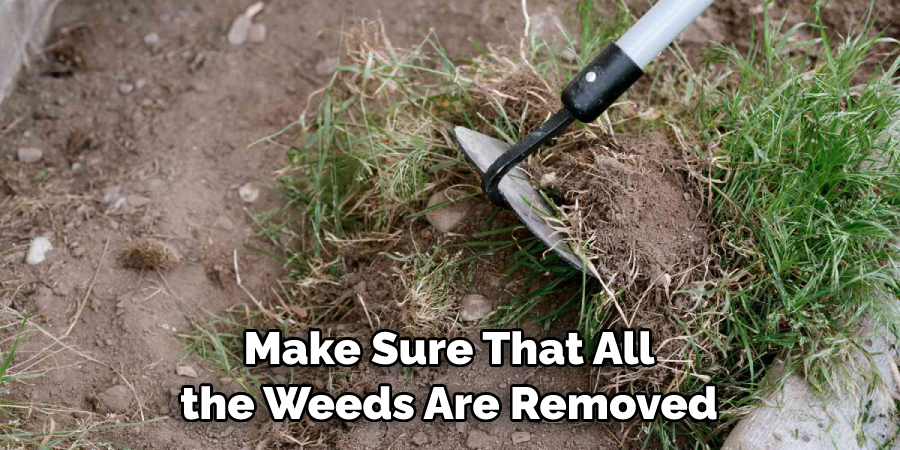
Conclusion
Knowing how to remove landscape fabric is essential in maintaining a healthy garden. This may seem daunting, and you may feel the need to give up, however with the right tools and understanding of the process it will become much easier. Start by finding a complete overview of the removal process online for guidance as to how best approach it.
Suppose you’re unable to find instructions online or have further questions regarding removing landscape fabric.
Our team here at [insert company name] is always just an email away and ready to help in any way that we can! Don’t forget that every garden is unique, so you should tailor the approach for your own yard. So don’t be discouraged if it takes a few attempts before achieving success.
You Can Check It Out to Remove Small Rocks From Yard

